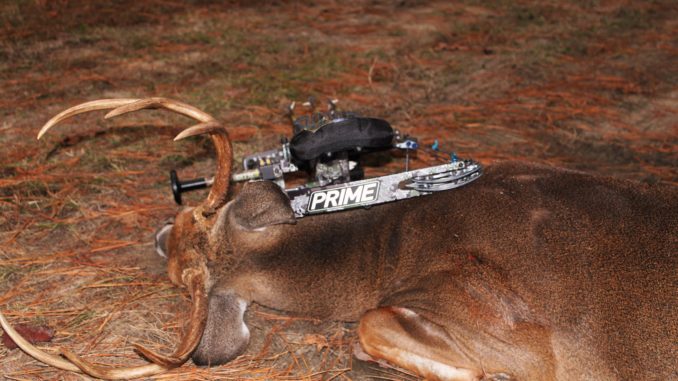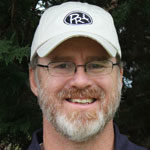
Find the food they eat when it gets cold and you’ll stand a chance to tag a late-season buck.
I sat motionless for hours, my breath lifting like steam in the bitterly cold morning air lofting as I waited for something to show. Frost covered everything, blanketing the area like a light dusting of snow.
For five days, the record cold had most of the eastern seaboard locked down. Schools and businesses were closed, as record low temperatures seemed to hover over the Southeast. The mercury read 9 degrees. Living in South Carolina, I can remember only a handful of days when the temperature was below 15, even fewer when it was below 10. Still, I knew that if I could tough it out, I would give myself a chance at a good buck.
Knowing how to approach the game and to prepare for the cold will put the odds in your favor when the mercury drops. Here are a few tips to help deal with the cold and still get your deer, especially if you carry a bow through the entire season.
To begin with, we need to understand that whitetail deer behavior changes when the cold sets in, and that more than just deer react to the cold; hunters are also affected, and individuals are affected to different degrees. In most places, extremely cold weather doesn’t arrive until after the rut has finished, so hunters are not dealing with hormone-crazed bucks; they are dealing with bucks who know they need to replenish from several weeks of chasing and breeding does.
This singular drive to replenish can be more intense than the rut itself. Studies estimate that bucks will lose between 30- to 40-percent of their body weight during the intense rut period. In real terms, this means an average 3 1/2-year-old buck in South Carolina that weighs between 150 and 175 pounds could potentially lose up to 45 pounds, going from full-bodied to emaciated. That is a lot of weight to lose in such a short time.
As the temperatures drop, mature bucks need to eat, and they need to eat a lot. During the rut, food was low on their list of priorities because of lust. With the prime season of love in the past, bucks need to recover to recover and put on fat to survive the coming winter.
“The drive for bucks to recover from the rutting activity and survive winter is just as great and may even be greater than the drive of the rut itself,” said Kip Adams of the Quality Deer Management Association.
This can give deer hunters an advantage if they either have natural foods available or offer supplemental food as winter approaches.
Hunting can be as simple as finding the most-reliable and most-desirable food source for these bucks. Being mammals, they need to eat and eat a lot to maintain core body temperatures. As the temperature drops, fur, fat and digestion all help insulate and warm the deer. The more food they can put into their system, the warmer they will be, so finding or establishing the food for them can spell success for bowhunters in the last few weeks of the season.
Hunters need to know where bucks will be feeding and when. Whether it is established food plots, native browse, late-producing mast trees, of a supplemental feeding location, deer will know where the best food is and will target these food aggressively. Natural late-season foods can be anything from oak, black locust, honey locust, beech and walnut mast to agriculture fields. Identifying these food sources and hanging stands close to them will put the odds in your favor.
Bigger bucks will bed down close to these food sources to save energy. Those mile-long walks from bedding to feeding areas are long gone. Find the thickest stuff close to where you suspect the deer to be feeding. River riparian zones that offer a lot of privet, cane and other leafy, evergreen plants are favorites of deer. Studies have shown that the No. 1 food for deer in the Southeast is Chinese privet, which can be found in abundance along waterways, creeks and other low-lying areas. If deer have traditional bedding areas with heavy cover close by, they’ll be able to bed and feed in a smaller area.
Hunting close will help put them within archery range. Bowhunters who are willing to pay the price of dealing with the weather will learn quickly that this can be one of the best times of year to get a mature buck.




Be the first to comment